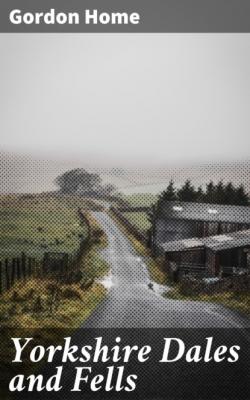Yorkshire Dales and Fells. Gordon Home
Читать онлайн.| Название | Yorkshire Dales and Fells |
|---|---|
| Автор произведения | Gordon Home |
| Жанр | Книги о Путешествиях |
| Серия | |
| Издательство | Книги о Путешествиях |
| Год выпуска | 0 |
| isbn | 4064066151799 |
Gordon Home
Yorkshire Dales and Fells
Published by Good Press, 2021
EAN 4064066151799
Table of Contents
CHAPTER I DESCRIBES THE DALE COUNTRY AS A WHOLE
CHAPTER V RIPON AND FOUNTAINS ABBEY
CHAPTER VI KNARESBOROUGH AND HARROGATE
CHAPTER VIII SKIPTON, MALHAM AND GORDALE
CHAPTER IX SETTLE AND THE INGLETON FELLS
Preface
This book is a companion volume to that entitled ‘Yorkshire Coast and Moorland Scenes,’ which was published in 1904.
It describes a tract of country that is more full of noble and imposing scenery than the north-eastern corner of the county, although it has none of the advantages of a coast-line. Beyond this, the area covered by the present volume is larger than that of the earlier one, and the historic events connected with its great over-lords and their castles, with the numerous monasteries and ancient towns, are so full of thrilling interest that it has only been possible to sample here and there the vast stores of romance that exist in some hundreds of volumes of early and modern writings.
GORDON HOME.
Epsom,
April, 1906.
THE DALE COUNTRY AS A WHOLE
CHAPTER I
DESCRIBES THE DALE COUNTRY AS A WHOLE
When in the early years of life one learns for the first time the name of that range of mountains forming the backbone of England, the youthful scholar looks forward to seeing in later years the prolonged series of lofty hills known as the ‘Pennine Range.’ His imagination pictures Pen-y-ghent and Ingleborough as great peaks, seldom free from a mantle of clouds, for are they not called ‘mountains of the Pennine Range,’ and do they not appear in almost as large type in the school geography as Snowdon and Ben Nevis? But as the scholar grows older and more able to travel, so does the Pennine Range recede from his vision, until it becomes almost as remote as those crater-strewn mountains in the Moon which have a name so similar.
This elusiveness on the part of a natural feature so essentially static as a mountain range is attributable to the total disregard of the name of this particular chain of hills. In the same way as the term ‘Cumbrian Hills’ is exchanged for the popular ‘Lake District,’ so is a large section of the Pennine Range paradoxically known as the ‘Yorkshire Dales.’
It is because the hills are so big that the valleys are deep, and it is owing to the great watersheds that these long and narrow dales are beautified by some of the most copious and picturesque rivers in England. In spite of this, however, when one climbs any of the fells over 2,000 feet, and looks over the mountainous ridges on every side, one sees, as a rule, no peak or isolated height of any description to attract one’s attention. Instead of the rounded or angular projections from the horizon that are usually associated with a mountainous district, there are great expanses of brown tableland that form themselves into long parallel lines in the distance, and give a sense of wild desolation in some ways more striking than the peaks of Scotland or Wales. The thick formations of millstone grit and limestone that rest upon the shale have generally avoided crumpling or distortion, and thus give the mountain views the appearance of having had all the upper surfaces rolled flat when they were in a plastic condition. Denudation and the action of ice in the glacial epochs have worn through the hard upper stratum, and formed the long and narrow dales; and in Littondale, Wharfedale, Wensleydale, and many other parts, one may plainly see the perpendicular wall of rock sharply defining the upper edges of the valleys. The softer rocks below generally take a gentle slope from the base of the hard gritstone to the river-side pastures below. At the edges of the dales, where waterfalls pour over the wall of limestone—as at Hardraw Scar, near Hawes—the action of water is plainly demonstrated, for one can see the rapidity with which the shale crumbles, leaving the harder rocks overhanging above.
Unlike the moors of the north-eastern parts of Yorkshire, the fells are not prolific in heather. It is possible to pass through Wensleydale—or, indeed, most of the dales—without seeing any heather at all. On the broad plateaux between the dales there are stretches of moor partially covered with ling; but in most instances the fells and moors are grown over at their higher levels with bent and coarse grass, generally of a browny-ochrish colour, broken here and there by an outcrop of limestone that shows gray against the swarthy vegetation.
In the upper portions of the dales—even in the narrow river-side pastures—the fences are of stone,
